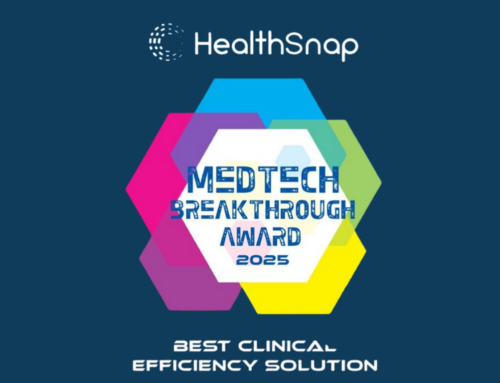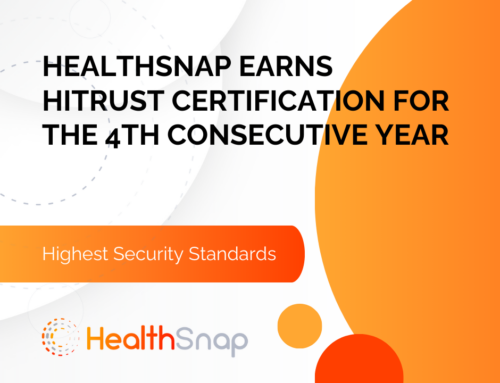The healthcare system in the United States suffers from a host of limitations. Inefficiency, high operating costs, and failure to provide easy access to care, particularly for patients from underprivileged sections – the list of issues is fairly long and has complex origins.
Ironically, among all the developed nations, the US spends the most on health care. And yet, Americans have one the lowest life expectancy rates and one of the highest rates of chronic illnesses among high-income nations.
The Triple Aim healthcare philosophy has been developed to make a positive difference to the state of health systems around the world, and in the US in particular. In this guide, we will discuss what the Triple Aim is all about and how Remote Patient Monitoring (RPM) can help in achieving its central goals.
The Origins of Triple Aim Healthcare
Triple Aim is a framework developed with the goal of optimizing the performance of healthcare systems and reducing costs of medical care. As the name suggests, this framework has three key objectives:
- Improve Population Health
- Improve Patient Experience
- Reduce Cost Per Capita
The Triple Aim framework was created in 2007 by the Institute for Healthcare Improvement, an organization founded in the late 1980s. The Institute was formed by a group of healthcare specialists and other experts with the mission of optimizing health system performance and finding ways to improve the quality of health care.
During the early stages, the Institute for Healthcare Improvement functioned merely as a collection of grant-supported programs. In 1991, the Institute was more formally structured, with a headquarters located in Boston, MA. The organization now receives funding and support from many sources, including revenue from its own teaching courses on improving population health.
The IHI currently operates as an independent organization with global reach. Apart from developing frameworks like Triple Aim, they are also actively involved in providing training and awareness programs to specialists working in the healthcare industry.
Understanding the Triple Aim Approach
The Triple Aim approach is hinged on the understanding that better public health cannot be achieved solely by improving hospitals and clinics. Instead, providers have to identify innovative strategies to engage with their patients within the local communities and try to improve public health outside the clinical setup.
Triple Aim is designed to promote a value-based care delivery system. In such a system, healthcare providers are compensated based on the quality of care they provide. This is a proven path to improving population health.
By focusing on quality instead of quantity (i.e., aiming for better outcomes for patients instead of the total number of patients treated), the value-based care delivery and payment system strongly incentivizes providers to try and improve their standards when treating patients.
Triple Aim Healthcare also encourages a holistic approach. Medical providers are expected to focus on all three facets (or prongs) of this framework simultaneously. This is not a step-by-step plan where you complete each step in a certain order. With that said, there are certain logical measures a healthcare system and healthcare organizations can take when they try to implement Triple Aim. These include:
- Identifying the at-risk populations in their local communities.
- Figuring out the unique healthcare needs of patients in those at-risk cohorts.
- Establishing system-specific goals based on the information gathered.
- Finding practical ways to achieve those goals.
- Developing ways to accurately track progress.
Three Pillars of the Triple Aim Healthcare Framework
Let us take a closer look at the three pillars of the Triple Aim approach.
Improving Population Health
Any individual living in a community has the potential to be a future patient at the local hospital, that is a given. However, in every community, you will always find some populations who are more vulnerable to health risks than others (such as seniors).
Individuals with chronic diseases like diabetes or high blood pressure are also more likely to interact on a regular basis with a local healthcare provider. Identifying these at-risk populations in advance could be highly beneficial for everyone concerned.
If the provider can identify the major reasons that force these patients to make a visit to the nearest clinic or hospital, they can develop strategies to deliver a higher quality of patient care in a more coordinated manner.
With such a proactive approach, the healthcare providers can significantly improve the overall state of public health in local communities. In the Triple Aim framework, IHI has identified several important principles that can make this task easier for accountable care organizations (ACOs) and health systems.
The recommendations are as follows:
- Try to involve the stakeholders from the local community – at-risk individuals and their families – when designing a new population health model.
- Consider a fundamental redesign and reorientation of the existing primary care services and structures for better population health management.
- Find ways to disseminate information among the local community to raise awareness about disease prevention and health promotion.
- Provide adequate emphasis to a platform designed to keep healthcare costs under control.
Improving Patient Experience
A negative treatment experience can drive patients away from the healthcare system. This is especially true in the case of underserved and economically challenged communities. Long wait times and unavailability of on-time care can be major deterrents.
Low-quality care can lead to inadequate or incorrect treatments or poor patient health outcomes, which will reduce the level of trust in primary care providers and the health care system in general among lower income populations.
Many patients may also have a hard time negotiating the formal requirements and procedures within healthcare systems. Filling out forms, keeping track of health records, and contacting the provider for guidance and follow-ups can all be quite challenging for at-risk populations.
This is why Triple Aim has identified the improvement of patient experience as a major goal for a better healthcare system. But achieving it at a population level is not an easy task, especially for healthcare organizations working in remote areas or among underserved populations.
The scale of the task at hand is formidable and health care organizations have to be mindful of the following requirements:
- A thorough understanding of the overall health of the local communities, mortality rates, and major risk factors.
- Awareness about the common issues faced by patients in accessing services, particularly related to communication challenges.
Numerous initiatives have been introduced in modern healthcare over the last few decades to address at least some of these issues related to both physical and mental health. They include the implementation of electronic health records (EHRs), managed care organizations (MCOs), and patient care coordination teams.
Any new innovation has to be backed by effective tracking processes – for instance, providers should consider doing frequent surveys and outreach programs to gauge the general satisfaction level of their patients.
Reducing Per Capita Cost of Health Care
In the US, the average per capita cost of health care per person was around $13,000 in 2021. That translates into a total cost of over $4.3 trillion, which is nearly 18.3% of the nation’s GDP. This is far ahead of comparable nations such as Germany, Switzerland, and the Netherlands – the highest of these, Germany with just $7,800 per capita health care costs, is still considerably lower than the US.
And to make matters worse, while the cost of health care is steadily rising in the US, the overall quality of the services shows a downward trend. This is in stark contrast to many of the European nations mentioned above, where the costs are low, but the quality of care for the general public is far better than what exists in the United States.
Health care for older citizens is a major challenge for all these nations, with the rising frequency of chronic health conditions among the elderly. Many of the conditions that affect an aging population are very expensive to diagnose and treat. With the myriad of system issues unique to the US, the specter of a constantly aging population presents a worrisome trend.
This is why Triple Aim considers cost reduction as an essential pillar for the creation of a more efficient healthcare system. The framework encourages healthcare providers to explore ways to reduce the cost of care, but not at the expense of the quality of care.
This is a tough balancing act – providers need to look beyond traditional solutions to more innovative alternatives. Novel technologies with the promise of unprecedented levels of efficiency and new treatment possibilities could provide the way forward. This is where solutions like Remote Patient Monitoring (RPM) enter the equation.
Triple Aim – Advantages and Challenges
There are always two sides to the coin – a radical and novel framework like Triple Aim is no different in this regard. The philosophy comes with a fundamentally beneficial goal of making the healthcare system more patient-friendly and affordable for all.
Such lofty goals have to contend with the ground reality of healthcare in the US (and other parts of the world), where it is often a highly sensitive and complex subject. In this section, we will highlight some of the additional benefits of the Triple Aim philosophy and some major challenges.
Advantages
The following are some of the top advantages of implementing the Triple Aim framework in community health:
Streamlined Care
The system highlights the importance of a primary care provider for the promotion of public health and the prevention of major community-wide health issues. When the members of a community rely on a single provider for most of their healthcare needs, it simplifies the system and makes it easier to access and navigate.
Proactive Prevention
Healthcare providers are constantly encouraged to seek out and identify potential health risks and other problems that may affect their local communities. This kind of proactive approach makes it more likely that major problems are identified early, much before they can escalate into full-blown public health crises.
Reduced Workload
Without preventive care initiatives, healthcare providers are left in a constant state of damage control, trying to save the lives of severely ill patients. When the system shifts to the Triple Aim focus on preventive care for chronic diseases, it reduces the number of patients who suddenly end up in hospitals with emergencies. Doctors and nurses are not overburdened and can provide a higher standard of care.
Coordinated Care
In the Triple Aim framework, healthcare providers are not alone in the fight for improved health care – they are encouraged to partner with community institutions, local businesses, schools, and religious centers, to engage with the community and provide outreach. This approach has the potential to reduce healthcare costs while improving overall community awareness and health literacy levels.
Challenges
While the framework constantly stresses the creation of achievable and practical goals, many of its recommendations are only achievable on paper. Here are some of the common challenges associated with Triple Aim implementation in health care:
Higher Risk of Burnout
Staff burnout and attrition are already at historically high levels in the US healthcare system in the aftermath of COVID-19. There are some concerns that Triple Aim could make things worse, and they are perhaps not without factual basis.
Even before the pandemic, the US health system was marked by chronic understaffing. When enthusiastic administrators quickly try to implement Triple Aim changes with unrealistic expectations, it can increase the risk of burnout among doctors and the nursing staff.
Burnout could prove to be highly counterproductive to the stated goals of Triple Aim – it increases the risk of mistakes (due to fatigue) and leads to an increased incidence of illnesses among hospital staff. As a result, the overall quality of healthcare services will suffer.
Fails to Address Systemic Issues
Insurance coverage is a major factor that decides who gets access to quality health care in the United States. Uninsured patients from poor income backgrounds may even skip essential treatment in fear of the high out-of-pocket expenses.
While Triple Aim does encourage providers to explore ways to reduce treatment costs, it does not address the issue of insurance coverage adequately. In any such system, the wealthier and insured patients will always have a better healthcare experience than the less fortunate ones.
Policy-Related Challenges
There is an undeniable policy angle to public health. Providers on their own cannot hope to achieve systemic change without support from the government. However, this is easier said than done – health care is an explosive political issue in the United States.
It’s quite common for politicians from across the spectrum to make lofty promises regarding issues like treatment costs or insurance coverage in the run-up to the election. But once they win, scant regard is paid to bringing meaningful change. Many of the goals of the Triple Aim cannot be achieved without political support.
Healthcare Workers Feel Neglected
Continuing the argument laid out in the section on burnout, it is not hard to see why at least some healthcare workers may have reservations about the Triple Aim approach. Its goals may seem overwhelmingly focused on the public while ignoring the welfare of healthcare professionals.
The issue was considered serious enough that proposals have been made to include an additional aim to the Triple Aim framework – improving the work life of physicians and nursing staff. In other words, to be truly effective, Triple Aim should be expanded to Quadruple Aim, according to some of its critics.
The Role of Remote Patient Monitoring (RPM) in Achieving Triple Aim Healthcare
The Centers for Medicare and Medicaid Services (CMS) is the premier federal agency that provides health insurance coverage to over 100 million Americans through programs like Medicare, Medicaid, Children’s Health Insurance Program, and the Health Insurance Marketplace.
The CMS has embraced Triple Aim as a priority for healthcare improvement in the US. With a focus on value-based payments, providers now have to implement Triple Aim best practices to increase their chances of claiming reimbursements from CMS.
And one of the novel solutions helping healthcare providers in this noble cause for better population health is Remote Patient Monitoring (RPM). It relies on innovative communication and digital technologies to deliver value to both patients and healthcare providers in new ways.
There are many ways in which primary care providers can leverage Remote Patient Monitoring to optimize patient care management and improve population health. Here is a short list of some of the things providers can do by harnessing RPM solutions:
- Monitor patients remotely without the need for hospitalization.
- Put a greater emphasis on disease prevention instead of reactive treatment.
- Drastically improved chronic care management at home.
- Implement early detection and intervention protocols to prevent severe disease.
Remote Patient Monitoring technologies can empower clinics and hospitals and help them go further in their quest to achieve the major Triple Aim goals. Providers can expect a significant boost in all three aspects of the framework:
RPM Improves Patient Experience
With remote monitoring devices, patients with chronic diseases can drastically reduce the time they spend in a hospital bed. RPM devices allow physicians to monitor such patients from their homes. When combined with other telehealth solutions, this leads to a vastly improved patient experience. In the new care model, patients have more agency and involvement in managing their conditions.
RPM Improves Population Health
Communities in remote rural areas suffer from poor health due to a lack of access to modern healthcare facilities. Patients often have to travel great distances to consult specialists who tend to be found in urban areas. Remote Patient Monitoring allows such providers to accept patients in remote locations and provide quality care. The same is also true for the elderly and other patients with mobility challenges.
RPM Reduces Healthcare Costs
Through early interventions and preventive care, physicians can reduce hospital admissions and readmissions of patients with chronic diseases. This helps keep the overall healthcare costs down in the system. Remote Patient Monitoring and telehealth are relatively inexpensive to implement when considering the massive cost reduction they can bring.
HealthSnap – The Leading Remote Patient Monitoring and Virtual Care Management Platform With a Proven Performance Record
HealthSnap is an industry leader in integrated virtual care management solutions. We offer cutting-edge solutions to further the goals of Triple Aim, including chronic disease management using Remote Patient Monitoring (RPM), Chronic Care Management (CCM), AI-guided care and coordination, virtual care delivery, and automated RPM billing.
For providers looking to implement virtual care management solutions for expanded revenue streams and easier CMS reimbursements, HealthSnap is the most trusted choice. Our virtual care management platform offers seamless integration with over 80 Electronic Health Record (EHR) standards.
With cellular-enabled RPM devices, such as blood pressure monitors, glucose meters, pulse oximeters, and scales, we make it easier for patients to use RPM technology without the need for high-speed WiFi, Bluetooth, or broadband connectivity. To learn how our services can help your organization realize its Triple Aim goals, give our team a call at 1-888-0780-1872, or fill out this contact form.






